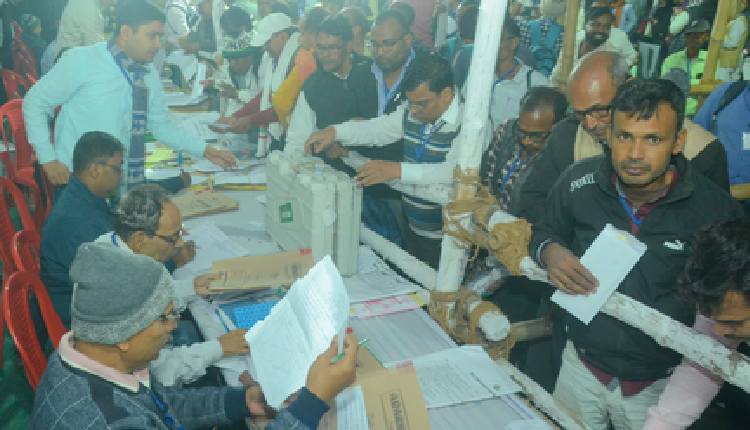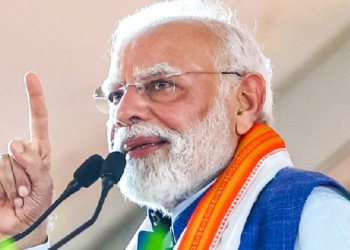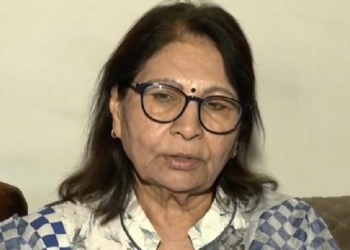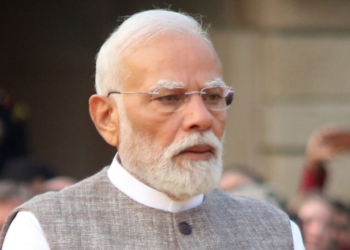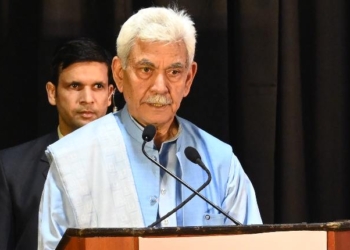New Delhi: The National Democratic Alliance (NDA) is heading towards one of its most decisive victories in two decades as counting continues for the Bihar Assembly elections.
Having crossed the 200-seat mark in the 243-member House, the NDA has not only consolidated its position but also surpassed its strong 2010 performance.
Here is a look at the major winners and losers:
Big Winners
Nitish Kumar
After nearly two decades in power, Chief Minister Nitish Kumar has successfully overcome anti-incumbency pressures. His Janata Dal (United) is leading in over 80 seats, contributing significantly to the NDA’s sweeping mandate.
The outcome secures Kumar a fifth term as Chief Minister and halts the Opposition’s attempt — especially that of Tejashwi Yadav — to project a “youth versus experience” narrative in Bihar.
Chirag Paswan
One of the biggest comeback stories of this election is Chirag Paswan. After winning only one seat in 2020, his Lok Janshakti Party (Ram Vilas) converted its nearly 6 per cent vote share into a remarkable performance, winning 22 of the 29 seats it contested.
A strong consolidation of the Paswan vote, coupled with Chirag’s appeal among Dalits and young voters, has significantly boosted his political stature within the NDA.
Asaduddin Owaisi and AIMIM
The All India Majlis-e-Ittehadul Muslimeen (AIMIM), led by Asaduddin Owaisi, has delivered another strong performance in the Seemanchal region, a pocket where it has steadily expanded influence.
AIMIM won five seats — Jokihat (Araria), Kochadhaman (Kishanganj), Amour (Purnea), Bahadurganj and Baisi (Purnea). These are the same constituencies it had secured in the 2020 elections, reflecting a firm hold on its support base.
HAM and RLM
Smaller NDA allies have punched above their weight. Hindustani Awam Morcha (HAM) of Jitan Ram Manjhi won five of the six seats it contested, while Rashtriya Lok Morcha (RLM) of Upendra Kushwaha led in four seats.
The strong performance of these partners played a crucial role in the NDA crossing the 200-seat threshold.
Big Losers
Tejashwi’s RJD
Despite being projected as the Opposition’s chief ministerial face, Tejashwi Yadav failed to convert anti-incumbency into electoral gains — even though he comfortably retained his Raghopur seat.
The RJD’s tally of just 25 seats is slightly better than its performance in 2010, when it won only 22 seats.
After gaining momentum in 2020, the party’s slide in 2025 dealt a major setback to Tejashwi’s political career.
Rahul Gandhi and Congress
The Congress once again failed to make an impact in Bihar, ending with single-digit seats.
Despite Rahul Gandhi’s “Voter Adhikar Yatra”, allegations of “vote chori,” and criticism of the Special Intensive Revision (SIR) exercise, the party struggled to connect with voters.
This outcome continues the decline seen in 2020, when the Congress contested 70 seats but won just 19, weakening the Mahagathbandhan’s prospects.
This time it contested 61 seats and has won three, and is ahead in three only.
Prashant Kishor
Political strategist-turned-activist Prashant Kishor, who is credited with helping several political parties win elections, finds himself among the most prominent losers.
Despite a two-year padyatra and high visibility, his Jan Suraaj platform failed to register any electoral impact — polling fewer votes than NOTA in several seats.
His development-centric pitch failed to resonate, and his choice not to contest seats created confusion about the movement’s direction.
Mukesh Sahani
Projected as a key player in the Seemanchal region, Mukesh Sahani — named a deputy CM face of the Mahagathbandhan after hard negotiations — failed to deliver. His Vikassheel Insaan Party (VIP) could not convert caste-based mobilisation into tangible gains.
The Nishad (fisherman) vote, which he sought to consolidate, appears to have swung decisively toward the NDA, attracted by targeted welfare assurances.
(IANS)




